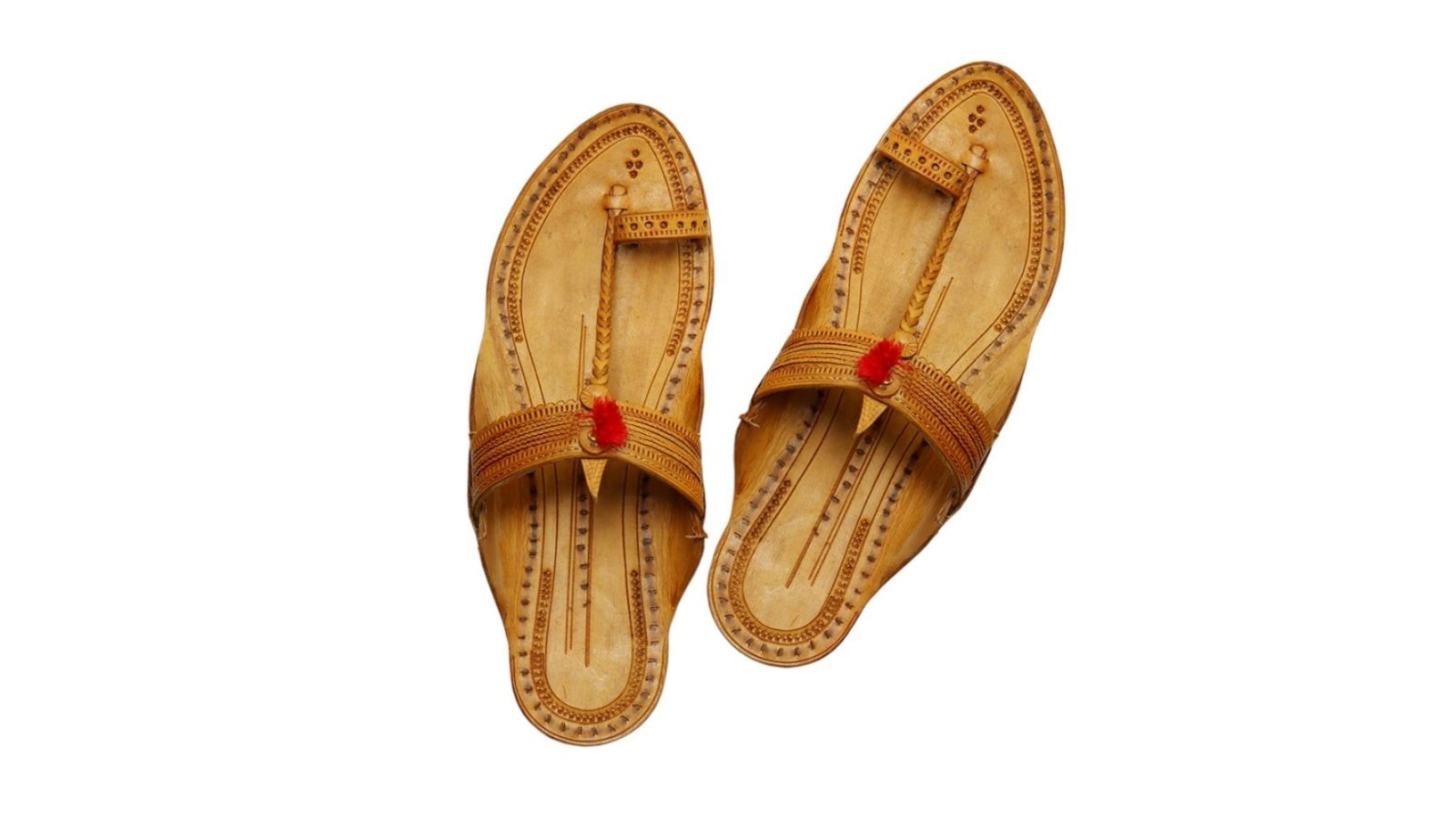Kolhapuri chappals are handcrafted leather sandals known for their intricate design and rich cultural heritage. Originating from Kolhapur, Maharashtra, their history dates back to the 12th and 13th centuries, when regional rulers such as King Bijjala and his prime minister Basavanna encouraged the development of local footwear craftsmanship. The tradition was later supported in the 18th century by Shahu Maharaj of Kolhapur, who helped establish the chappals as a symbol of Indian artisanal identity.
These sandals are made using vegetable-tanned buffalo or cowhide leather, stitched by hand without the use of nails or machines. Often custom-fitted, they are designed to offer the flexibility and comfort suited to the Indian climate.
In July 2019, Kolhapuri chappals received a Geographical Indication (GI) tag, legally restricting the use of the name to chappals produced in Kolhapur, Sangli, Satara, and Solapur in Maharashtra, and Belgaum, Dharwad, Bagalkot, and Bijapur in Karnataka.
Internationally, similar footwear is often sold as generic “toeholds,” obscuring their Indian origin. In 2025, Italian luxury brand Prada released open-toed leather sandals closely resembling Kolhapuris, priced at approximately ₹1 lakh (over $1,200). The brand did not initially credit Indian artisans or heritage, sparking public backlash and litigation in the Bombay High Court. Prada later acknowledged the design’s Indian inspiration and expressed interest in collaborating with artisan groups.
Despite this global spotlight, many Kolhapuri artisans continue to struggle with limited market access and inconsistent institutional support. The design has evolved through generations, but preserving its handmade essence remains vital to the identity of Kolhapuri chappals.



